Today was the first chance I've had to go to one of their meetups - a visit to Beeston Castle and Woodland Park, located 11 miles southeast of Chester, Cheshire. The weather forecast did not look good, but I've learned that if you wait for great weather to do anything around the British Isles, you wait for a very long time and you don't do very much. You just have to soldier on and do what you want to do, in spite of the weather.
Over the course of the 45 minute drive down to Beeston, what started out as merely an overcast morning turned into the kind of gray, solid rain that you knew was going to last for hours. Oh well. We hiked up to the top of the sandstone crag anyways, and we encountered plenty of other people doing the exact same thing. True Brits.
I will say that it's past time I invest in some new rain wear for myself (my old rain jacket got ripped). Trying to take photos while holding an umbrella is a pain.
Right. Beeston Castle. Today I learned that archaeological evidence shows human activity on the site dating back to the Neolithic period (3500–2000 BC). When you stand on the summit, you can understand why. It's a high, rocky crag that towers 350 feet over the Cheshire Plain, naturally defended on three sides by steep cliffs. The views over the plain are absolutely commanding (even in foul weather).
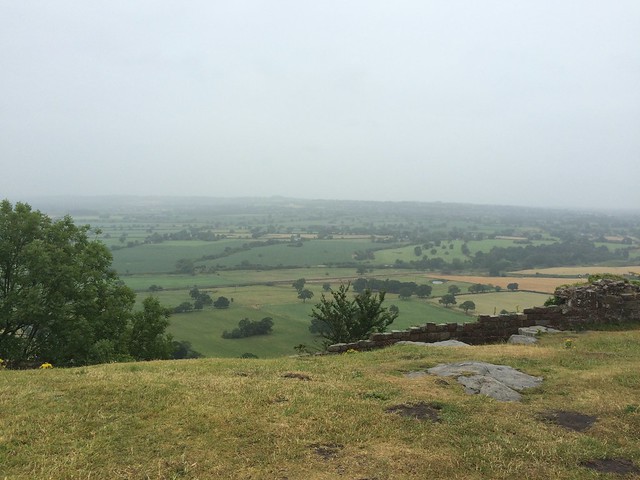
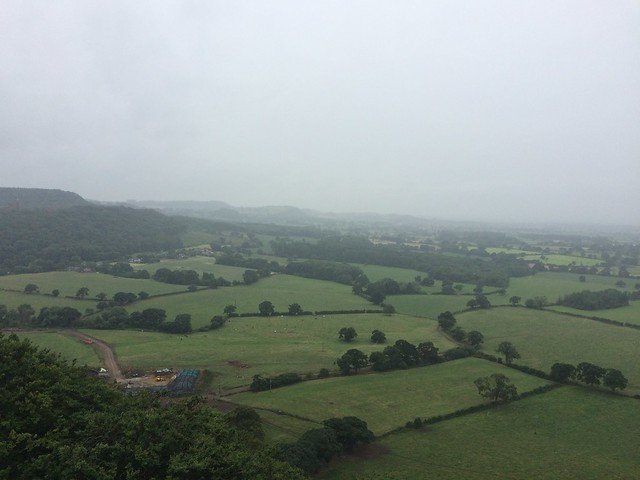
Beeston is said to offer one of the most spectacular views of any castle in England. Unfortunately, not today. :-(
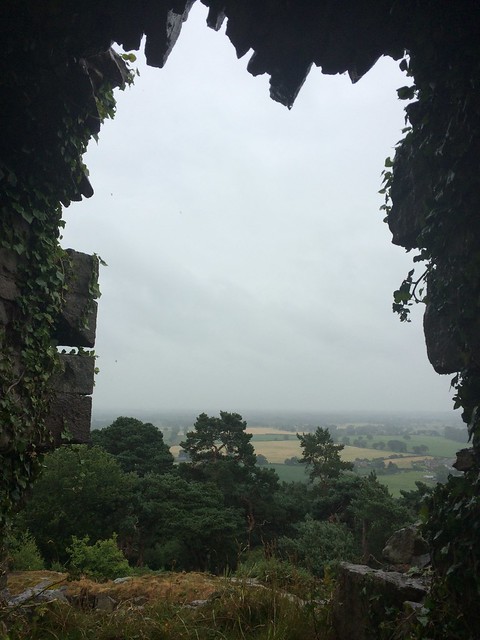
No one could sneak up on you, and there's only one, sloping side that could be used for attack. Natural Neolithic defenses evolved into earthwork and wood defenses in the Bronze and Iron Ages. The hillfort became a metalworking and trading centre, and there are some small copper pieces, pottery fragments and other small finds on display in the tiny museum attached to the visitors center. It was interesting to note that for whatever reason, there were no signs of significant Roman presence at the hillfort. Perhaps their garrison at nearby Chester was sufficient?
Ranulf de Blondeville, 6th Earl of Chester, received the lands from King John, and he began building his "Castle of the Rock" in the 1220s after his return from The Crusades and during the reign of King Henry III. (Sorry, the Game Of Thrones dork in me could not help but think of Casterly Rock.) It was a defense against his rivals and a statement of his power, and his builders began right on top of the Iron Age defenses, adapting and incorporating them into their design.

Inside the visitors center -- Small models of the Castle of the Rock in medieval times, showing the Outer and Inner Wards. The outer bailey walls utilized the original Iron Age ramparts, which is why the Outer Ward is so large.
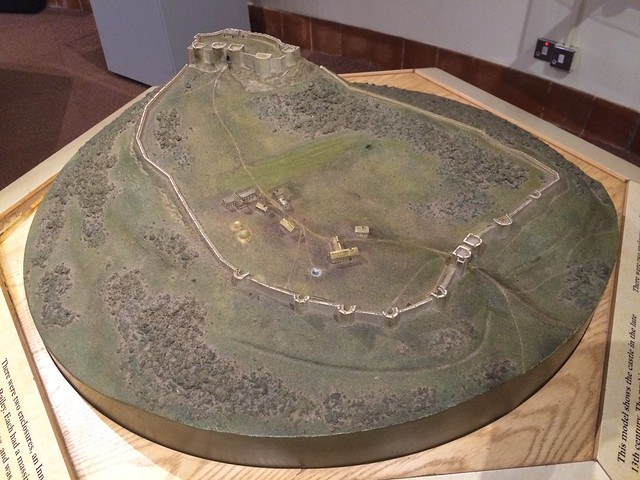
The D-shaped towers allowed defenders to fire arrows across the walls.
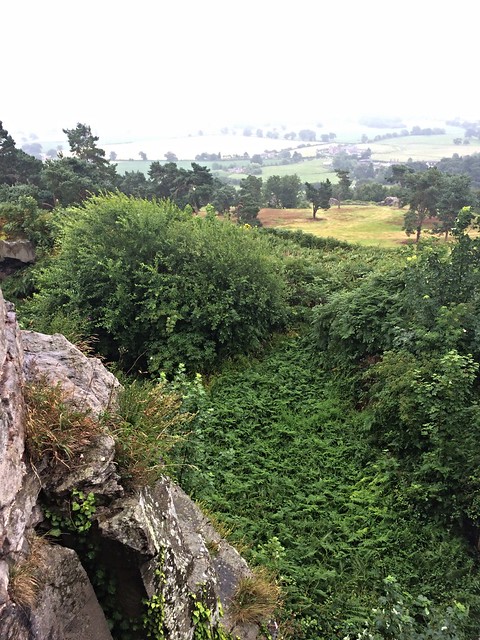
The rock-cut defensive ditch. Although currently overgrown, this ditch is up to 30 feet deep and provided an extra layer of defense for the vulnerable East side.

The only way across the deep, defensive ditch today is via the modern bridge.
The next few centuries of history for Beeston were a little boring (seized by King Henry III from Ranulf's female-only heirs, periodic building, etc.), except for the legend of a large gold treasure hidden in the Inner Ward's well by King Richard II (Richard of Bordeaux), never found. This well is 370 feet deep, one of the deepest castle wells in England. (Back when they were digging the well in the 13th century, how did they know they'd find water down there if they just kept digging?) Apparently historians and archaeologists have sent cameras down the well, but still no treasure.
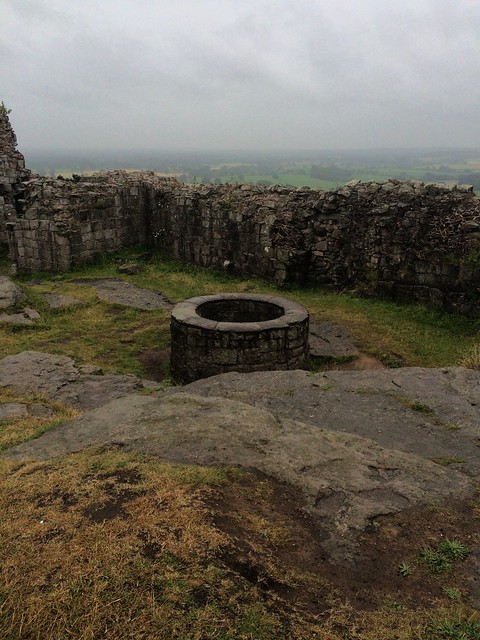
Then things at Beeston got exciting again during the English Civil War (1642–1651), when Royalists held the castle and were besieged by Parliamentarians. After the Royalists surrendered in November 1645, the castle was destroyed to prevent it being used in the future against the new government. During the 18th century, the ruins were used for a quarry, leading to further destruction.
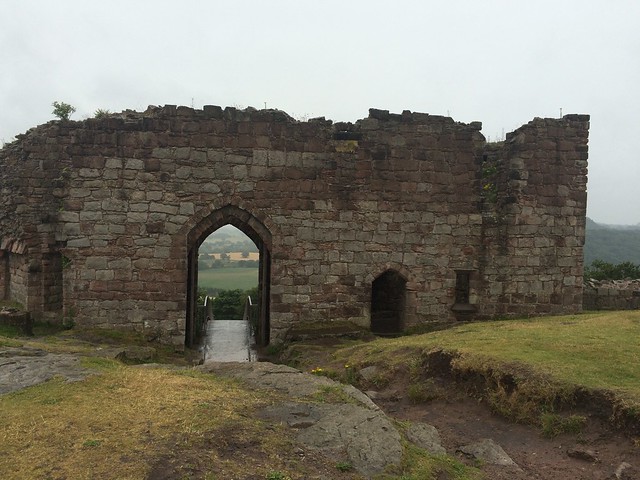
Not much remains of the inner bailey today.
The Peckforton estate, land and castle ruins were acquired in 1840 by John Tollemache, who later became 1st Lord Tollemache of Helmingham. He partially reconstructed parts of the castle and turned the outer ward into a park, repairing part of the outer curtain wall and planting fir trees.
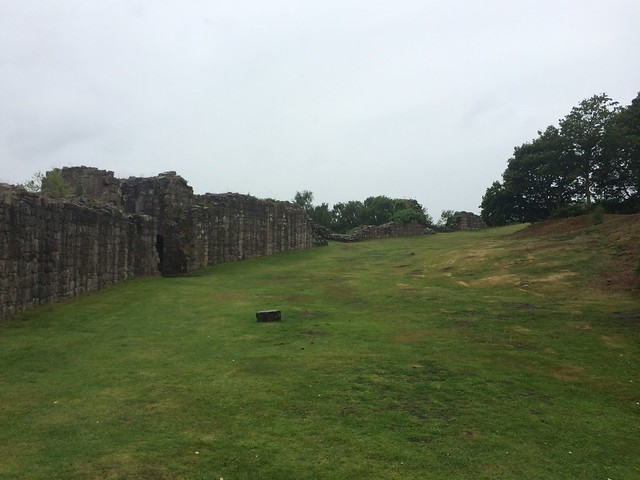

Tollemache also added a new gatehouse, which served as the ticket turnstile for visitors and tourists. This building was designed to imitate the medieval inner ward gatehouse. Today, it is still the entrance and the English Heritage visitors center and gift shop.
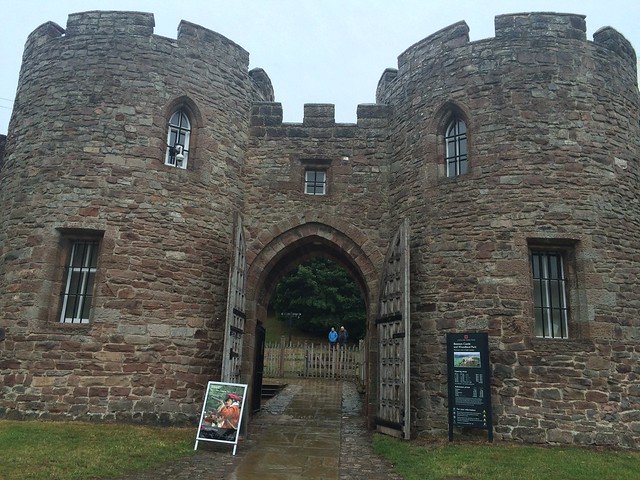
Compare to the original (with modern bridge):
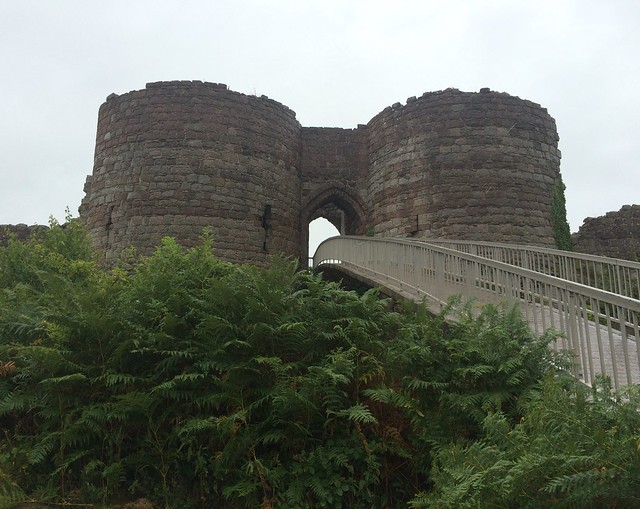
There are supposed to be some lovely woodland paths around the castle grounds, but at this point we were all damp and cold, so we headed back inside the visitors center to warm up and to grab a small bite from the cafe. Despite being damp and cold, they had Cheshire Farm Real Dairy Ice Cream, and I have had a hankering for ice cream for about a week now, so I got a little cup of honeycomb ice cream. I had never eaten honeycomb before, and mixed in with the vanilla ice cream, it was DELICIOUS. I recently have discovered the wonder of Fentimans fizzy drinks, so I also got a ginger beer. Not the healthiest lunch, but I had just hiked up a 350 feet tall crag, so I didn't feel at all guilty.

After our break, we headed just across the way to Peckforton Castle. John Tollemache began building Peckforton in 1842, as a medieval castle reproduction, but of course, without true military defenses and with all of the modern comforts and amenities of the age. It took nine years to design and build, and the result is glorious. It still stands intact today, as a luxury hotel, spa and resort.
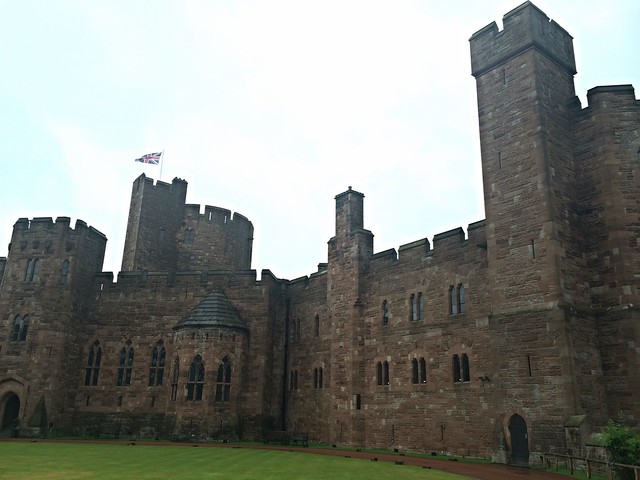
We had hoped to be able to enjoy a posh coffee at the castle, but as it is peak season and they had a wedding happening, they were booked solid and were only seating hotel guests or people with reservations. Instead, we just peeked around a bit.
They have a large birds of prey aviary and Falconry program.
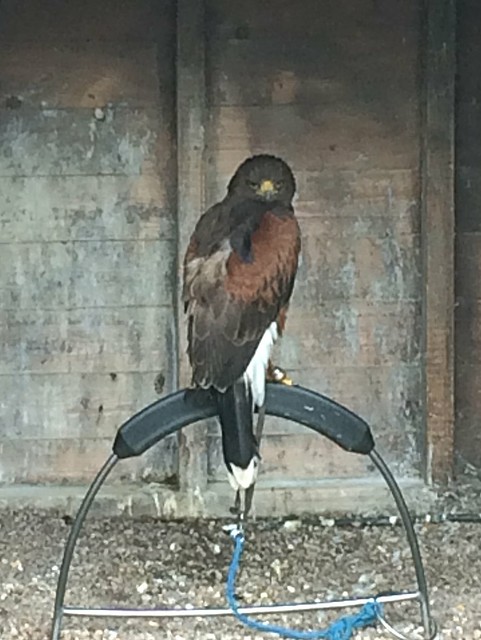
As well as a peacock wandering about and here a white peahen perched on a wall.
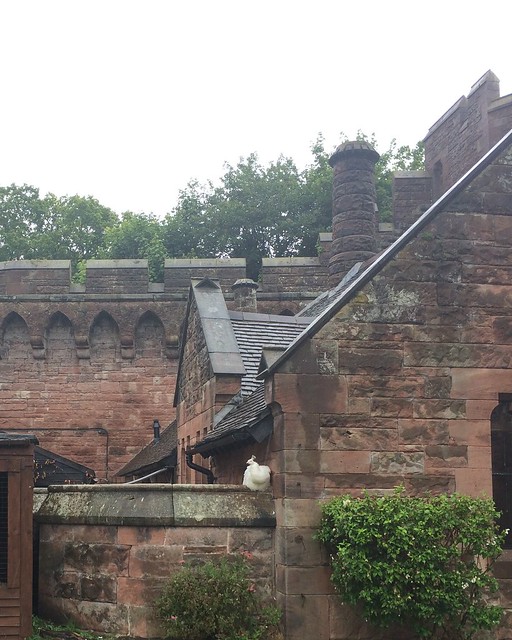
The castle's Great Hall was beautifully decorated for the soon-to-start wedding.
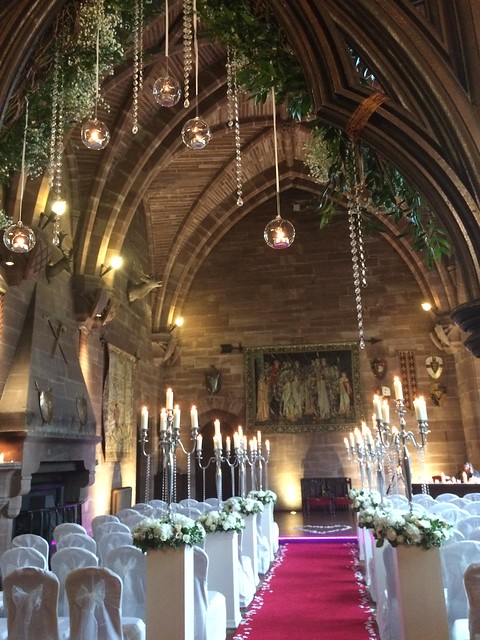
The atmospheric Wine Cellar, illuminated with candles, would be the scene of the post-wedding cocktails.
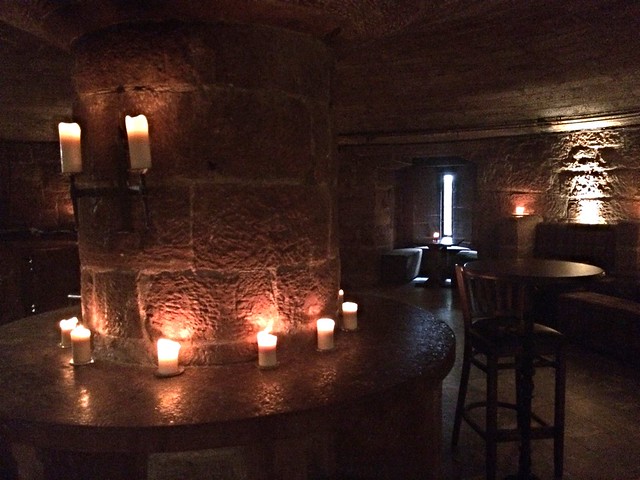
I would love to do a weekend getaway to Peckforton sometime, maybe even give archery or falconry a try.
One of the ladies in the group was an Art & Architectural History specialist who used to work as an inspector for historical buildings, and she provided great commentary about the architectural features of Peckforton. I also met a very nice Chinese lady who moved here just 3 months ago, so I got to use a little bit of the Mandarin I've been learning. All in all, it was a lovely afternoon with a great group of people. Who needs sunshine?
When I got home, though, I had to admit defeat on the temperature and turn on my central heat. In July.

Get a waterproof camera! We have a Fugifilm point and shoot that was only $150 and has survived pools and oceans. I'm sure it can take the English weather.
ReplyDelete